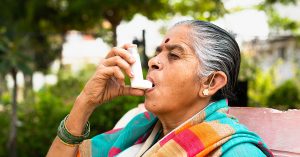What is Public Health Follow-Up: Overview, Benefits, and Expected Results
Definition and Overview
A public health follow-up is an evaluation of the current condition of public health and an assessment of a particular health risk. This becomes necessary when there are certain health risks discovered within a community. For example, a public health follow-up may become necessary when an individual in a community is diagnosed with a serious health disease (such as Ebola, for example) that may become a risk to the health of the general public. A different follow-up may be necessary for each particular risk and each specific situation.
The main goals here are to protect and improve the health of the entire community by providing a diagnosis and assessment of any health risk so that proper care and preventative measures can be applied. If a follow-up is not implemented in time, there is a possibility that a particular health risk may spread to the entire community.
Who Should Undergo and Expected Results
A public health follow-up can be conducted in any community when a certain health risk has been identified. Its immediate goal is to identify the risks, assess its extent, and prescribe care and rehabilitation measures to improve public health. In the process, all hospitals, doctors, and nurses within the community are informed about the risks and any testing and prescription guidelines so that individual cases can be properly handled, monitored, and recorded. As a result of the follow-up, recommendations on the surveillance, treatment, and prevention of specific health risks are set in place.
Public health follow-up is conducted when a certain community is at risk of:
- Serious infectious diseases, such as AIDS/HIV, malaria, and cholera, among others
- Chronic diseases, such as hepatitis
- Bacterial contamination
- Viral diseases, such as SARS, viral hemorrhagic fever, and many others
- Hazardous materials, such as radioactive material
- Animal bites, either domestic or wild animals
- Arboviral disease, such as encephalitis and dengue
The need for these follow-up evaluations can be triggered by:
- Outbreaks
- New cases of infection
- Events that release particular health hazards to the community
A public health follow-up can also be performed for any kind of medical illness to assess the prevalence of the said illness within a particular location or community within a specific period. For example, it can be used to compare the number of patients suffering from a specific disease within the community from year to year or to determine whether the number of existing cases increased or decreased over a one-year period.
How Does the Procedure Work?
The public health follow-up program is an integral part of public health maintenance in most communities. If a certain health risk is identified, the doctors and nurses who handled the case will report the said event to the proper authorities, and an entire process will be initiated. This involves:
- Providing treatment and education to patients primarily affected by the health risk
- Conducting more tests to determine the causes and other factors related to the risk/hazard
- Identifying characteristics that are similar across all infected individuals to come up with hypothetical risk factors and identify more persons who are at risk
- Screening all persons who have come into contact with the patient or the health hazard
- Identifying outbreaks
- Containing the infection or hazard
- Setting into place immediate risk reduction and prevention strategies
- Allocating public health resources, such as funding, to manage the risk/hazard
- Reporting new cases or hazards to the national level
At the end of the follow-up, a report should be prepared to summarize the details of the risk or hazard. This risk assessment summary or case report plays an important role in disseminating information to all members of public health care. Its various components are:
Overview of the risk/hazard – This includes all important information about the disease or health hazards, such as mode of transmission, incubation period, infectious period, symptoms and warning signs, and risk factors.
Case report – This summarizes the rate and trend of infection/contamination.
Case definition – This determines the rate of confirmed cases and probable cases as well as enumerates the different types of infected cases.
Case management – This summarizes how each case is handled, from case and exposure investigation to isolation.
Contact management – This summarizes the identification of potential contacts (or people who came into contact with the infection/contamination) for assessment.
Laboratory testing – This highlights existing laboratory testing guidelines.
Surveillance management – This summarizes how existing cases of infection and contamination are identified and monitored.
Communications/data dissemination – This summarizes how new cases should be reported to public health officials.
Prevention activities – This highlights all preventative measures that are in place, such as vaccinations and outbreak control.
Possible Risks and Complications
Without a proper public health follow-up procedure in place, health risks and hazards can spread across a community faster because:
- New cases are not reported and handled properly
- Infections and hazards are not properly contained, thus increasing transmissions and heightening the risk of an outbreak
- Doctors and nurses will not be sufficiently informed and educated about risks/hazards
A public health follow-up helps stress the importance of preventative measures and equips public health care providers on how to respond to each new health risk or infection. This way, the public can be protected from major health risks and hazards.
Reference:
- American Public Health Association
/trp_language]
Table of Contents
1. What is Public Health Follow-Up?
2. Benefits of Public Health Follow-Up
2.1 Early Disease Identification and Prevention
2.2 Ensuring Proper Treatment and Care
2.3 Tracking and Monitoring Public Health Trends
3. Expected Results of Public Health Follow-Up
3.1 Reduced Disease Transmission
3.2 Improved Health Outcomes
3.3 Enhanced Public Health Emergency Response
4. Conclusion
—
1. What is Public Health Follow-Up?
Public health follow-up refers to the systematic process of tracking, evaluating, and managing individuals who have been exposed to or diagnosed with a communicable disease or a health condition that poses a risk to the community. It involves identifying and notifying contacts, providing necessary interventions, and assessing the effectiveness of preventive measures.
In essence, public health follow-up is a crucial aspect of disease surveillance and control. It aims to prevent the spread of diseases, protect communities, and improve overall population health.
2. Benefits of Public Health Follow-Up
2.1 Early Disease Identification and Prevention
One of the primary benefits of public health follow-up is early disease identification and prevention. By promptly identifying cases and contacts, public health authorities can intervene quickly, interrupt disease transmission chains, and prevent outbreaks. This is particularly important for highly contagious diseases such as COVID-19, tuberculosis, and sexually transmitted infections.
2.2 Ensuring Proper Treatment and Care
Public health follow-up plays a vital role in ensuring that individuals diagnosed with a disease receive appropriate treatment and care. Follow-up activities may include counseling, health education, medication adherence support, and linking individuals to relevant healthcare services. This comprehensive approach helps to optimize individual health outcomes and prevent further complications or progression of the disease.
2.3 Tracking and Monitoring Public Health Trends
Another significant benefit of public health follow-up is the ability to track and monitor public health trends. By collecting and analyzing data on disease incidence, prevalence, and associated risk factors, public health authorities can identify emerging health threats, implement targeted interventions, and evaluate the impact of public health programs and policies. This data-driven approach enables evidence-based decision-making and enhances overall population health planning.
3. Expected Results of Public Health Follow-Up
3.1 Reduced Disease Transmission
One of the expected results of public health follow-up is a reduction in disease transmission. Through timely identification and intervention, critical steps such as quarantine, isolation, and contact tracing can be implemented effectively. By isolating infected individuals, providing treatment, and identifying and notifying contacts, the spread of contagious diseases can be minimized. This, in turn, protects the health and well-being of the community as a whole.
3.2 Improved Health Outcomes
Public health follow-up contributes to improved health outcomes by ensuring individuals receive timely and appropriate care. By providing guidance, support, and access to necessary resources, public health authorities can help individuals effectively manage their condition and prevent complications. This proactive approach not only benefits the individuals under follow-up but also leads to improved overall population health outcomes.
3.3 Enhanced Public Health Emergency Response
Another expected result of public health follow-up is an enhanced public health emergency response. By establishing robust surveillance systems and protocols, public health authorities are better equipped to detect and respond to public health emergencies promptly. This includes providing timely information and guidance to healthcare providers, community organizations, and the public, facilitating effective coordination among various stakeholders, and implementing necessary control measures to mitigate the impact of emergencies.
4. Conclusion
Public health follow-up is a critical component of disease control and prevention efforts. By systematically tracking and managing individuals exposed to or diagnosed with communicable diseases, public health authorities can effectively intervene, prevent the spread of infections, and improve population health outcomes. The benefits of public health follow-up include early disease identification and prevention, ensuring proper treatment and care, and tracking and monitoring public health trends. The expected results of public health follow-up encompass reduced disease transmission, improved health outcomes, and enhanced public health emergency response. By prioritizing and investing in public health follow-up programs, communities can build resilience, minimize the health impact of disease outbreaks, and promote overall well-being.








Very informative article! #publichealth #overview
Great read! #benefits #results
So helpful!